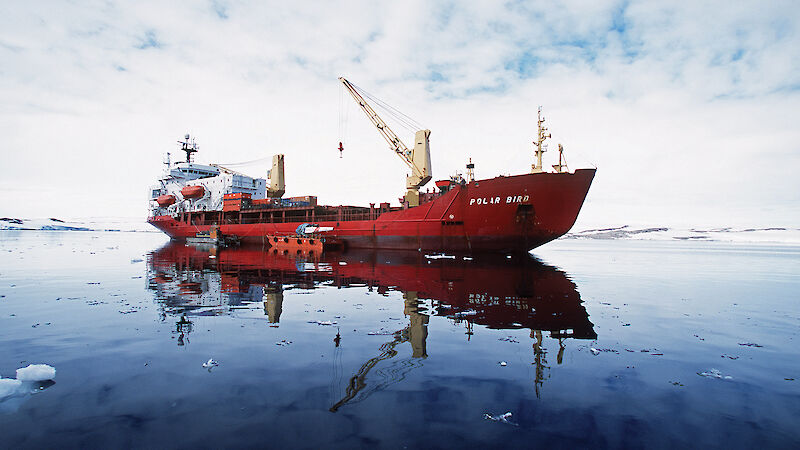Originally launched in 1984 as the MV Icebird, the world’s first purpose-built Antarctic resupply ship was renamed the MV Polar Bird in 1996 by its new Norwegian owners. The Polar Bird was named for its ability to 'fly' through the ice.
Specifications
- Motor Vessel (MV)
- Ice class: Arc 1 / E4 (forepart Arc 2) icebreaker
- Installed power: MAK 5,400 horsepower (4,000 kilowatts)
- capacity with module: 4,378 tons
- capacity without module: 6,436 tons
- length: 106.6 metres
- breadth: 19.9 metres
- speed: 14.7 knots
- 98 passengers in module accommodation; 22 crew
Key Antarctic voyages
The ice-strengthened ship was chartered by ANARE from 1984–85 to 1994–95 under its former name (the Icebird), and from 2000–2003 as the Polar Bird.
In 2001, while attempting to transport supplies to the ANARE field camp on the Amery Ice Shelf west of Davis station, the Polar Bird became trapped by heavy pack ice in Prydz Bay. The more powerful icebreaker, the RSV Aurora Australis, departed from Casey station to help rescue the ship. Although the Aurora Australis was now nearby, further bad weather made its captain retreat for fear that ship might also become stranded. Once weather improved, the Aurora Australis moved closer to the Polar Bird, slowly making its way through the thick pack ice to tow the beset ship out of the ice.
In 2003, the Polar Bird was sold for general cargo service, and renamed Almog.

